We are still at the height of summer’s abundance at the market. If you’re facing mounds of summer fruit (including fruit we eat as vegetables), turn them into an easy coulis.
A coulis is basically a sauce made from puréed fruits and vegetables. A French word, you pronounce it coo-lee, not coo-liss. Google Translate says its English meaning is grout, but a French dictionary describes it as a juice concentrate. The latter, thankfully is more accurate, though it’s thicker and more substantial than juice.
Something that distinguishes coulis from other sauces is that the purée is not cooked. You might cook the fruit first, if it’s necessary to soften it, but once it’s soft you add optional ingredients, purée, strain and you’re done.
I was first introduced to coulis at the same time I learned about French yogurt cake via Lime Yogurt Cake with Blackberry Sauce. I like blackberries, but not their seeds, so a fresh sauce without seeds had appeal. I learned, too, that the sauce is good on other things, such as yogurt, ice cream, and other treats, as well as savory foods.
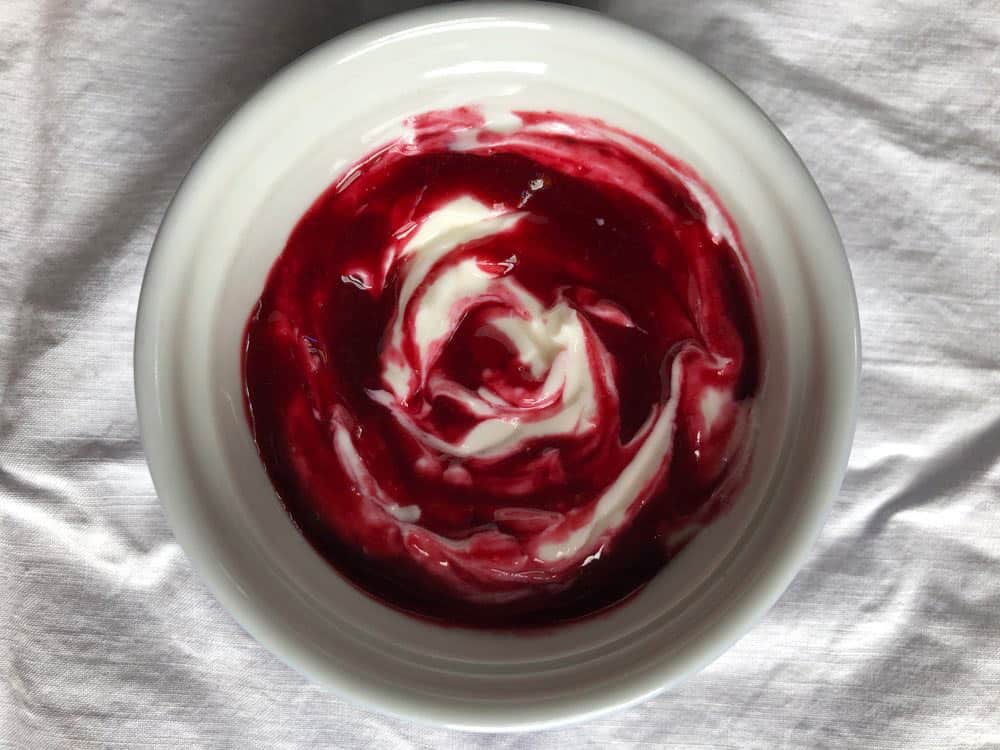
So pretty swirled in yogurt
Photos by Heather Cross
Yogurt cake, or (in French) gâteau au yaourt, is a quick and easy but yummy cake. Supposedly French parents and grandparents use it to teach very young children to bake. Bringing up Bébé has a chapter describing an idyllic Saturday afternoon in Parisian family life where the four-year-old calmly but happily makes a yogurt cake by herself with few comments from Maman nearby. Yogurt jars (or cups), approximately four ounces or so, are used for all the major measurements. This encourages counting and understanding of proportions, and simplifies the measuring and cleanup process. Recipes vary, but the one I used most recently was 1 jar of yogurt, 2 of sweetener (I used honey so cut it to 1 ½ jars), 3 of flour, and one of oil. Three eggs, ½ teaspoon of salt, and 2 teaspoons baking powder round out the yogurt jar measured ingredients. Using self-rising flour can cut out two of these ingredients, making it the process even simpler. Flavorings, such as vanilla extract or citrus zest (I used 2 teaspoons lime zest), and additions, such as chocolate chips or berries, are optional.
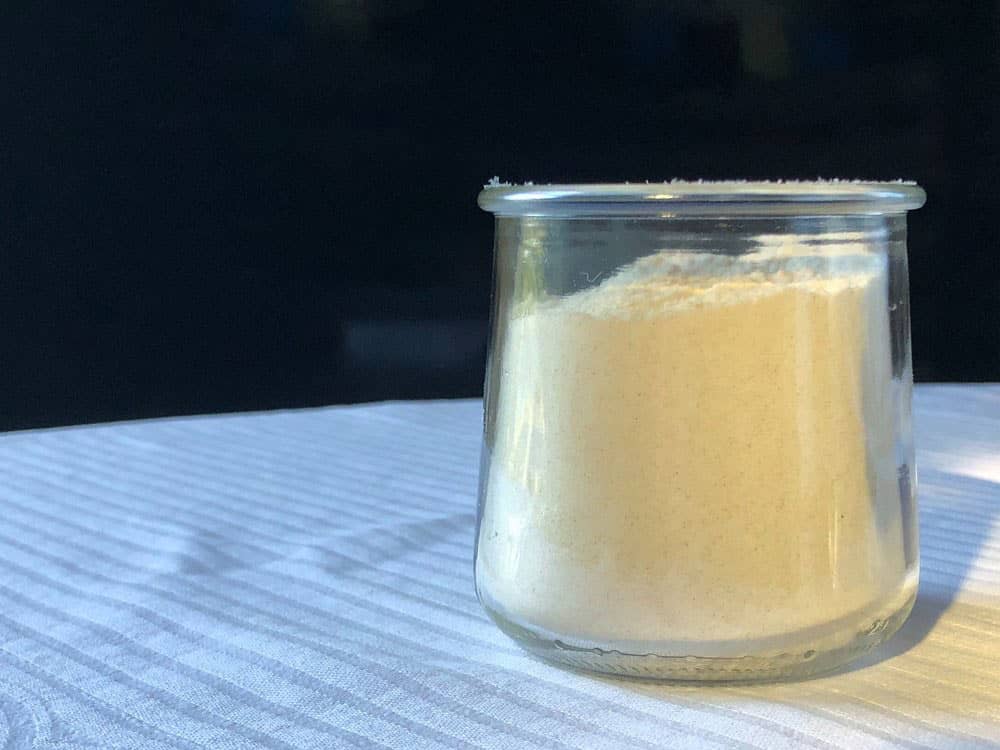
Measuring flour in a yogurt pot
The oil in the recipe has always bothered me. Why in the world would the French, of all people, use *oil* in a cake? I suppose it’s because it’s a child’s cake and it’s easy. Also, theoretically there are pâtisseries in every town so the average French man or woman does not have much reason to be an expert cake baker. I dug a little deeper and found that Italians make yogurt cake as well, but are more likely to use butter (if online recipes are to be believed). Side note: they also use little single-serve packets of baking powder. This at first struck me as wasteful, but baking powder does decrease in effectiveness over time so it’s pretty clever.
I decided to go with the Italians and used butter in my cake. I loved the flavor, but the texture leaned towards pound cake. Next time (and it’s so simple I think there will be a next time sooner than later) I’ll try half the butter, and/or another jar of yogurt.

Using a grandmother’s recipe calls for great-grandmother’s bowl
Back to the coulis. Smitten Kitchen’s recipe is based on two, 6-ounce containers of blackberries, but you can use just about any amount of fruit. The basic proportions are 1 cup of fruit, 2 tablespoons sweetener, 2 tablespoons water, and optional flavorings. In this blackberry coulis it’s lime juice, but you can use other juices, alcoholic beverages such as liqueurs or wine, and/or flavor extracts. Keep the ingredient in mind when deciding the amount. For juices or wine use about a tablespoon, but keep extract and liqueur amounts down to a half or so teaspoon.
Scale this recipe up as desired. You could scale it down, but there might not be enough to blend, unless you have a mini food processor. Blend, then strain. This is my least favorite part of the process so, if I can, I make coulis ahead of when I need it, pour it in the strainer, mash it a bit, and go do something else. I let gravity do at least some of the work, but eventually I have to come back and push it through the strainer some.
Yogurt cake can be made into cupcakes as well
This recipe works for most fruits, not just blackberry. We’re coming to the end of berry season, but still have plenty of fruits ahead of us. All melons, persimmons, and pears can be made with the basic recipe. All the plum recipes called for cooking, before or after puréeing, but I’m not sure why that’s necessary. They should at least purée easily without being cooked.
Other fruits now in season that are cooked for coulis are grape and apple. Grape I assume needs cooking to thicken. Apple coulis is pretty similar to applesauce, but this recipe takes it up a few notches with the addition of butter and brandy as well as spices.
Figs are coming to market, and you can make a raw coulis with them. It’s a thicker coulis, more of a spread, though if you wanted something thinner you could add water or juice.
What about vegetable coulis? Right now the most obvious ones to make are tomato and pepper. Tomato coulis is distinguished from other tomato sauces mainly by its ease and simplicity. Fresh tomato coulis comes together quickly and without cooking. Use it to add flavor to a simple summer meal. Coulis with roasted red pepper is similar to one of our favorite pasta sauces, but simpler and vegan.
A beautiful coulis is made with beets. Do you have a pile of beets from your CSA and a picky eater? Make some coulis and use small amounts to decorate your child’s plate. Or your own.
With fruits or vegetables, in all seasons, and with a little ingenuity and help from the internet, you should be able to find a coulis to suit your taste and liven up your plate.
Basic Fruit Coulis
Ingredients:
1 cup fruit such as berries, peaches, melons, persimmons, etc.
2 Tablespoons sweetener (honey, maple syrup, etc.) (add more to taste, tart fruit, or with significant addition of tart juices)
2 Tablespoons water (adjust according to the juiciness of your fruit)
2 Tablespoons citrus juice, other fruit juice, or wine (optional)
½ teaspoon extract, such as vanilla, almond, etc. (optional)
Directions:
- Remove fuzzy skin, large seeds, and/or thick rinds from fruit. Small seeds and thin, smooth skins are fine.
- Process fruit with the rest of the ingredients in a blender, food processor, or with an immersion blender. Add water as needed to blend. Taste and adjust sweetener and optional flavors.
- Pour into a food mill or mesh strainer to separate sauce from solids. This can end up being the longest part of the process.
- Serve immediately or chill until serving.
Printable recipe here

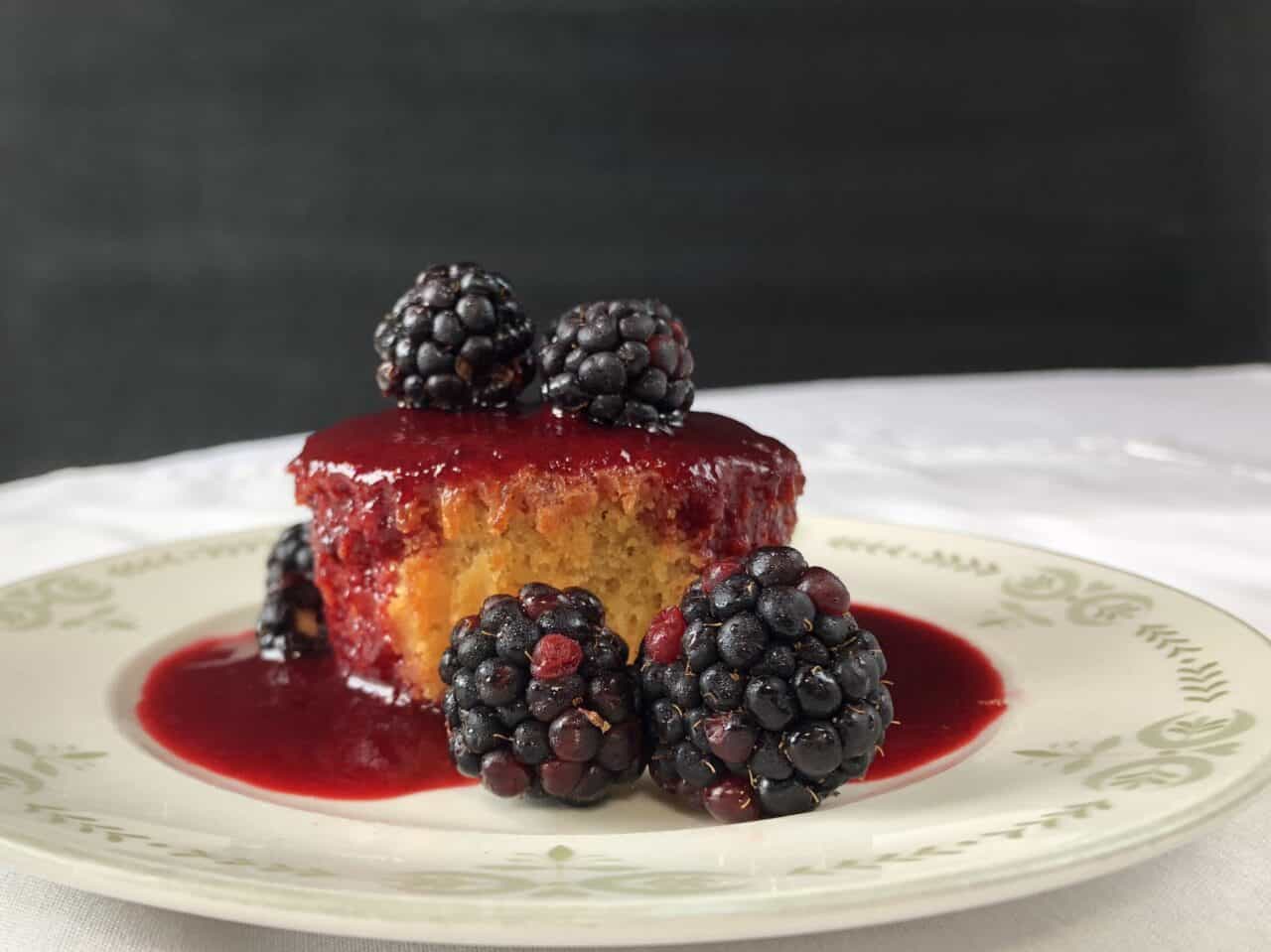
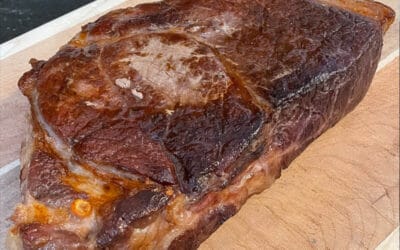
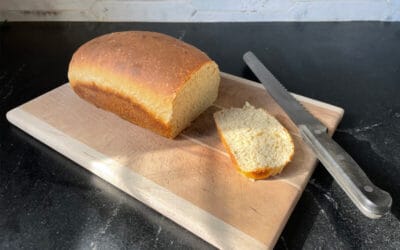

0 Comments